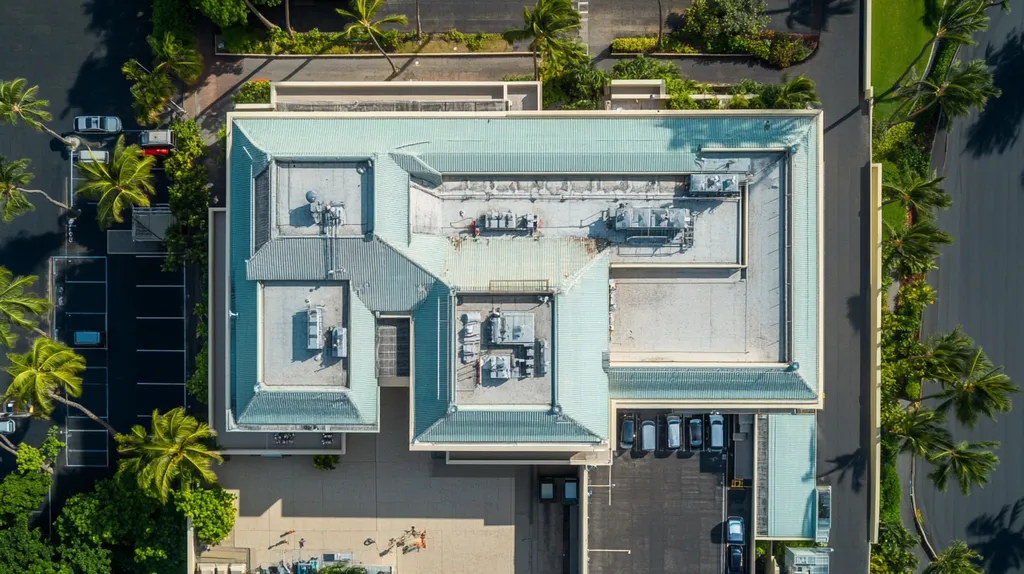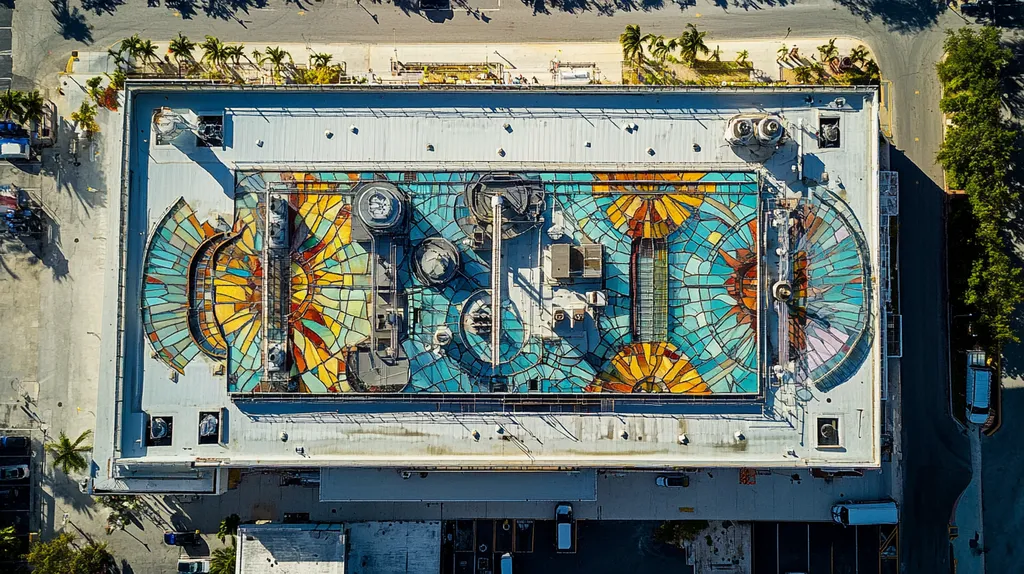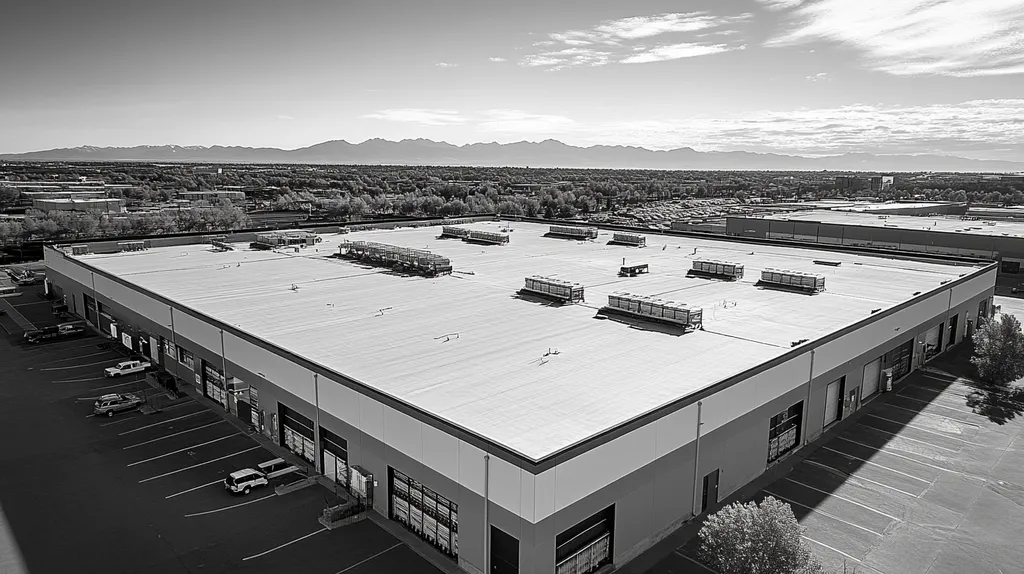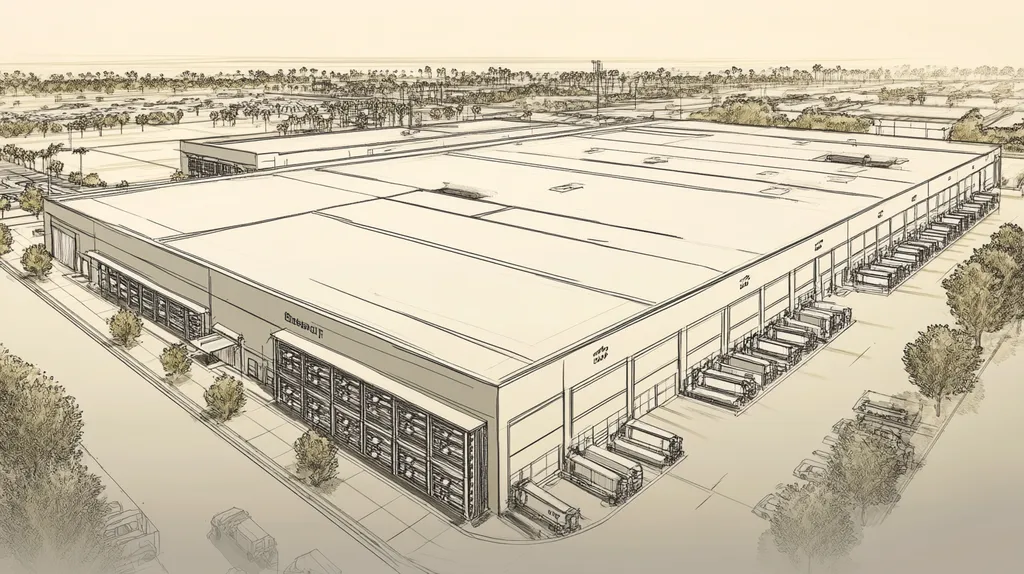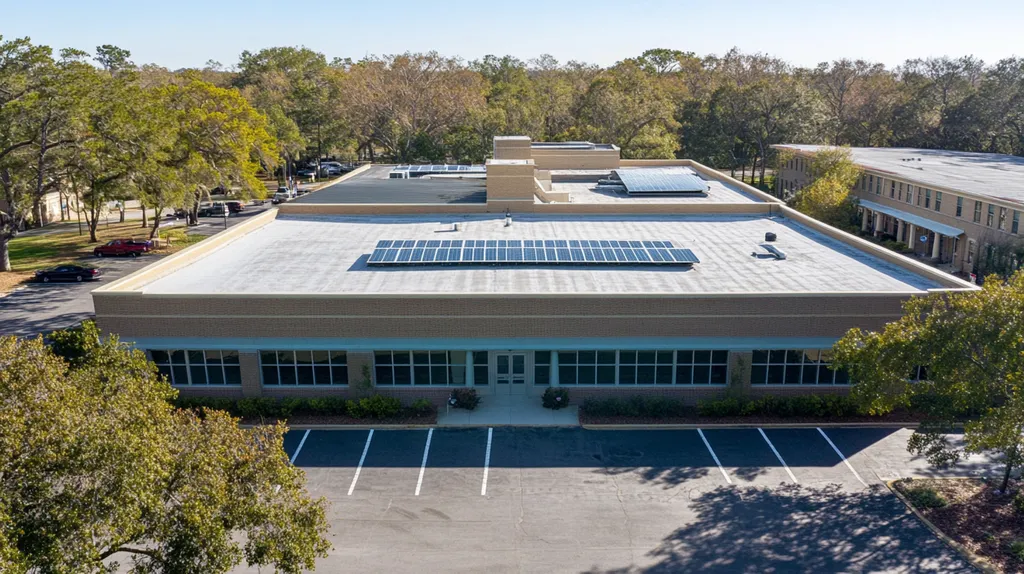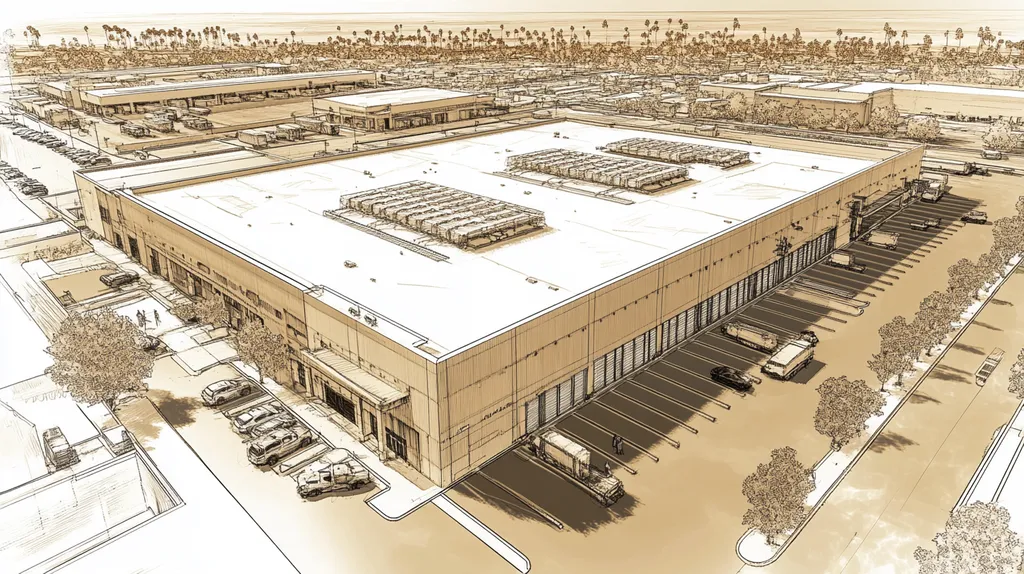Industrial roofing faces a crisis in pest detection that costs facility owners over $2 billion annually in structural damage and lost productivity. Traditional inspection methods miss up to 40% of early-stage infestations, leading to catastrophic failures that could have been prevented.
From outdated visual surveys to ineffective tool kits, the industry’s standard approaches are falling dangerously short. This systematic analysis exposes critical flaws in current practices while introducing data-driven alternatives that are revolutionizing how we protect industrial roofs from pest damage.
By examining the limitations of established methods and exploring emerging technologies, facility managers can finally move beyond the “catch and kill” mentality toward truly effective pest management strategies.
SECTION 1: CURRENT PRACTICES
Pest infestations pose a significant threat to industrial roofs, leading to costly repairs and structural weaknesses. Disturbingly, research indicates that up to 30% of commercial properties are affected by hidden pest issues that go undetected during inspections. Given these alarming statistics, it’s critical for property owners to grasp the shortcomings of current pest detection methods. Understanding these limitations empowers them to take proactive steps in safeguarding their investments.
Visual Inspections and Limitations
When it comes to pest detection on industrial roofs, visual inspections reign supreme. Inspectors typically scan for obvious signs like droppings or nests, thinking they’re covering all bases. But here’s the catch: many pests play hide-and-seek beneath roof materials or in those tricky spots that are hard to access.
Take rodents, for instance. They can slip in through tiny openings, making them incredibly difficult to spot without getting into the nitty-gritty. This keeps property owners in a vulnerable position, unaware of what’s lurking overhead.
Another issue? Inconsistency reigns in visual inspections. Different inspectors bring varying levels of expertise to the table, often leading to conflicting conclusions about the same roof’s condition. This patchwork approach to pest detection can easily jeopardize a facility’s long-term integrity.
In short, while visual inspections provide a good starting point, depending solely on them invites trouble. It’s a bit like playing a game of chance with your roof’s health, and not the kind of game you want to lose.
Traditional Tool Kits and Equipment
The typical tool kit for pest detection on industrial roofs often includes staples like flashlights and mirrors. These may help with some inspection tasks, but they come with significant limitations. Relying on traditional traps may result in a false sense of security, as these devices might miss elusive pests or misrepresent the actual infestation levels.
Specialized equipment, like moisture meters that could help catch problems before they escalate, are often ignored. This oversight means missed opportunities for early pest detection and prevention.
Additionally, many inspectors are unfamiliar with advanced detection techniques such as thermal imaging or ultrasonic sensors. Without these tools, inspections remain rooted in outdated methods that can obscure a roof’s true health, complicating pest management when it’s most needed.
Standard Inspection Protocols
Standard inspection protocols tend to stick to basic guidelines that overlook the intricate details of industrial roofing systems. Many inspection practices only address surface-level observations, sidelining underlying issues that can pose real threats.
This superficial approach can easily overlook critical indicators of pest activity, such as water damage or structural breaches, leaving properties unprotected.
Add to this the fact that inspection schedules often rely on arbitrary time intervals instead of actual conditions. This leads to routine checks that are either unnecessary or insufficient, meaning potential pest problems can fester below the surface.
Moreover, many of these protocols fail to consider seasonal pest behavior, which varies throughout the year and can significantly impact pest populations. As a result, established protocols may unintentionally escalate pest threats, increasing the potential for damage and costs down the line.
SECTION 2: SYSTEMIC ISSUES
Industrial roofing inspections reveal a troubling truth: the methods used for pest detection are riddled with systemic flaws. Ignoring these fundamental issues not only puts facilities at risk, but it also allows undetected pest problems to fester—over 30% of commercial buildings fall victim to unused inspection processes that miss these hidden threats. This section highlights urgent areas of concern, such as safety risks, inadequate training, and a lack of comprehensive data collection.
Safety Risks and Height Challenges
Inspections of industrial roofs come with built-in safety hazards that can severely compromise pest detection efforts. Most inspections happen at significant heights, where falls turn into the ultimate workplace nightmare. Did you know that nearly 20% of all fatal accidents in construction stem from roof-related falls? That’s a staggering statistic.
Add to this the need for quirky equipment like harnesses and scaffolding, which complicates matters further. Property managers often feel pressure to cut corners on inspection budgets, trading safety for speed. This reckless approach endangers inspectors and frequently leads to missed pest signs lurking just out of sight.
Unchecked risks can snowball into major infestations. If pests go undetected due to inadequate safety measures, they can wreak havoc on structural integrity—think expensive repairs and a hefty price tag. Height-related obstacles further complicate matters, underscoring the urgent need for better safety protocols and modern detection tools.
Inadequate Training and Certification
Another glaring oversight in pest detection inspections is the woeful lack of proper training and certification for inspectors. Many of these professionals waltz into the field oblivious to crucial aspects of pest behavior and indicators—talk about a disaster waiting to happen.
Research shows that nearly 40% of inspectors struggle to identify common pest droppings or signs of damage accurately. This kind of oversight leads to misdiagnoses and, ultimately, costly consequences for facilities. Without structured training programs, inspectors are often left to wing it, which is simply unacceptable for the health of a building.
The ramifications of ineffective training ripple through the industry, leaving properties exposed to infestations. To combat this pressing issue, comprehensive training and certification are essential. Establishing industry-wide standards will enhance the overall quality of pest inspections in industrial settings.
Lack of Comprehensive Data Collection
The shortcoming of comprehensive data collection in pest detection only amplifies the systemic issues plaguing inspections. Far too often, inspectors depend on anecdotal evidence or isolated observations instead of thorough data analysis. This limited approach prevents a clear understanding of pest activity across a facility—leaving property owners flying blind.
Data-driven solutions are crucial for tracking pest patterns and assessing the effectiveness of past measures. For example, facilities employing detailed pest monitoring systems have been shown to cut down infestations by as much as 50%. Without consistent data collection, owners remain unaware of the lurking pest threat at their doorstep.
Additionally, a weak data foundation hinders informed decision-making about pest control strategies. To improve inspection accuracy and effectiveness, thorough data collection needs to become standard practice in the industry. Revolutionizing this process equips property managers with the tools to mitigate risks and safeguard their investments.
SECTION 3: MISSED OPPORTUNITIES
Industrial roof inspections frequently bypass key factors that dramatically heighten vulnerability to pests. When hidden entry points go unnoticed, they pave the way for unwanted infestations that can jeopardize both structure and contents. A single unnoticed crack or gap can let rodents and insects slip inside, resulting in hefty repair bills and costly operational interruptions. Grasping these missed opportunities is crucial for effective pest management and ensuring the longevity of roofing systems.
Overlooking Hidden Entry Points
Many property owners severely underestimate the multitude of potential entry points on their roofs. Cracks, gaps, and inadequately sealed penetrations act as highways for pests. Traditional inspection methods tend to focus narrowly on visible problem areas, completely missing these concealed vulnerabilities.
Takes HVAC units, vent pipes, and other rooftop equipment, for example. If these areas weren’t sealed correctly during initial installation, they could morph into significant entry points. Conducting regular inspections that zero in on these specific components can significantly reduce pest access.
Furthermore, examining the roof during quieter periods of pest activity is essential. During these lulls, minor openings may become apparent during thorough inspections, allowing for timely interventions. Such a proactive approach can nip potential infestations in the bud.
In short, addressing hidden entry points should be a foundational element of any pest management strategy. Neglecting these aspects can lead to unnecessary maintenance costs and increased liability.
Neglecting Moisture Sources
Moisture is a magnet for pest activity on industrial roofs. Issues like roof leaks, condensation, and poor drainage create an inviting environment for these unwelcome guests. As moisture accumulates, various insects and rodents may turn the roof into a thriving nesting ground.
Consider the scenario of a clogged drainage system. When water pools, it can lead to mold growth, which, in turn, attracts insects. Not to mention, moisture-damaged areas often compromise roofing materials, creating more entry points for pests. Therefore, property managers must regularly monitor these conditions to mitigate pest issues.
A proactive approach includes ensuring that ventilation and drainage systems are functioning properly to minimize moisture buildup. That’s not just good practice—it should be part of every roof inspection. This two-pronged strategy of pest detection and moisture management strengthens the roof’s integrity and reduces its appeal to pests.
Ultimately, addressing moisture as part of a comprehensive roofing inspection can lead to impressive savings. Stopping pest infestations before they start diminishes the chances of extensive damage and, consequently, costly repairs.
Ignoring Non-Destructive Testing Methods
Non-destructive testing (NDT) presents effective tools to uncover roofing issues without inflicting damage. Unfortunately, many inspections still rely heavily on visual checks, thus potentially missing critical pest and structural problems. Embracing NDT techniques can unveil hidden defects, including lurking pest infestations.
Methods like infrared thermography or acoustic emission testing can pinpoint moisture accumulation without any physical intrusion. These advanced techniques help identify areas susceptible to pest thriving, enabling targeted interventions. They offer invaluable insights that outdated methods might overlook.
Adopting NDT not only boosts inspection quality but also conserves time and resources. These cutting-edge methods significantly diminish the risk of unforeseen damage, ensuring the roof’s performance stays intact for the long haul. Such a transition signifies a shift toward more comprehensive and effective inspection strategies.
In summary, weaving non-destructive testing into routine inspections provides a proactive solution to pest management. Understanding these innovative methods equips property managers to elevate both roof performance and their overall pest management strategies.
SECTION 4: ROOT CAUSES
Understanding pest infestations on industrial roofs is crucial for maintaining structural integrity and avoiding expensive damage. Design flaws, inadequate maintenance, and subpar materials are key players in this grim scenario. A closer look at these root causes unveils an urgent need for smarter construction methods and consistent upkeep. Property owners must confront these issues proactively to protect their assets and extend the lifespan of their roofs.
Design Flaws in Flat Roof Construction
Flat roofs, a go-to choice for many industrial buildings, often come with critical design flaws. Without proper slope, water tends to collect, making it an inviting pool for pests. Additionally, weak flashing and seams can create unwanted entrances for these uninvited guests.
Lack of proper drainage only compounds the issue, transforming roofs into playgrounds for rodents and insects. Combined with insufficient ventilation, these design flaws provide an ideal setting for pests to flourish. Roofing professionals must prioritize effective design elements to minimize water retention and its consequences.
Case studies indicate that facilities designed with superior drainage and ventilation systems experience noticeably fewer pest-related issues. For instance, integrating tapered insulation can significantly reduce water accumulation, making roofs less attractive for pests.
Ultimately, addressing these design flaws is a non-negotiable step for preventing future infestations and enhancing a property’s long-term value.
Poor Maintenance and Drainage Issues
Poor maintenance is a major driver behind pest infestations in industrial roofs. Regular inspections and timely repairs are essential for spotting vulnerabilities. Ignoring these responsibilities can lead to serious drainage problems, allowing water to build up and entice pests to move in.
Clogged drainage systems can result in stagnant water pools, a breeding ground for unwanted critters. Facilities that skip maintenance chores are at a heightened risk of infestations, often leading to expensive damage control later.
Effective maintenance includes cleaning debris off roof surfaces and ensuring that drains and gutters are working correctly. Following a routine inspection schedule helps identify potential issues before they become full-blown pest problems.
Proper maintenance not only keeps pests at bay but also boosts the roof’s overall lifespan—a win-win for property owners.
Inadequate Building Materials
The materials used in roof construction can dramatically affect pest populations. Inferior building materials can degrade over time, creating chances for pests to thrive. Thin or improperly sealed roof membranes can provide insufficient protection against infestations.
Using substandard materials can lead to cracks and gaps, which pests can exploit as entry points. Moreover, certain materials hold moisture, creating an ideal environment for pests, further escalating the risk of infestations.
Choosing high-quality roofing materials ensures durability and significantly minimizes pest-related problems. Property owners should invest in robust membranes and treatments designed to resist pest activity effectively.
Prioritizing quality in building materials is key to creating a solid barrier against pests. The long-term savings from reduced pest management expenses can easily outweigh the initial investment in superior materials.
DATA DRIVEN EVIDENCE
Industrial roofs are often battlefields for pest infestations that can devastate structures and budgets alike. Shockingly, studies show these infestations can lead to repair costs exceeding $100,000 annually for large facilities. When traditional pest detection methods fail to catch these issues early, property owners may find themselves facing unexpected and expensive damages. This section dives into advanced technologies that provide concrete solutions and real evidence for more effective pest detection on industrial roofs.
Infrared Thermography Advantages
Infrared thermography stands out as a game changer in the quest to detect pest infestations and moisture issues in roofing systems. This high-tech method employs thermal imaging to uncover temperature fluctuations, which can signal pest activity or moisture damage. Since critters often generate thermal anomalies, this technology makes pinpointing trouble spots a breeze before they spiral into major issues.
The benefits of infrared thermography go beyond detection; it enables early interventions, slashing repair costs and operational downtime. In fact, a facility that integrated this technology boasted a 40% decrease in roofing-related expenses. Additionally, the visual data produced serves as a persuasive tool for justifying maintenance budgets to stakeholders.
Another bonus? Infrared thermography is non-invasive and can be carried out with minimal disruption to day-to-day operations, which is a huge plus for busy industrial sites. Incorporating this method not only amplifies pest detection efforts but also contributes to the overall durability of roofing systems.
By weaving infrared thermography into routine maintenance, property owners can shift from reactive to proactive pest management strategies, aligning their practices with the demands of modern facility management.
Moisture Detection Technologies
Moisture detection technologies are becoming indispensable in the fight against pest infestations on industrial roofs. Devices like moisture meters and dielectric sensors provide precise readings of moisture levels within roofing materials, which is key since pests tend to flock to damp areas.
These technologies shine with their ability to offer real-time data. By continuously tracking moisture levels, facility managers can act swiftly, curbing conditions that would otherwise invite pest problems. Research shows that early moisture detection can reduce pest-related incidents by over 65% in monitored buildings.
Moreover, moisture detection tools help shape comprehensive maintenance strategies. By integrating moisture data with existing roofing information, managers can refine maintenance schedules and allocate resources where they’re needed most. This proactive stance not only shields against potential pest invasions but also extends the usable life of roofing materials.
Ultimately, utilizing moisture detection technologies transforms pest management into an evidence-based practice, enhancing both operational efficiency and cost-effectiveness.
Case Studies on Effective Methods
Real-world case studies vividly demonstrate the advantages of advanced pest detection techniques in industrial environments. One large warehouse implemented both infrared thermography and moisture detection methods during inspections. They successfully identified various pest hotspots and moisture-related issues before damage could escalate.
This strategic investment saved the warehouse a whopping $150,000 in repair costs within the first year alone. Not only did the technology pay for itself, but it underscored the value of data-driven approaches to pest management. Stakeholders felt a renewed sense of confidence in the facility’s maintenance protocols and safety measures.
In another instance, a manufacturing plant grappling with chronic pest issues adopted real-time moisture monitoring. This proactive approach slashed pest infestations by 70% over two years, leading to lower maintenance costs and increased employee productivity, as pest distractions faded from the work environment.
These compelling case studies advocate for a shift from outdated pest detection methods. By integrating advanced technologies into roofing systems, properties can identify problems early and elevate overall building performance. The industry would do well to take notes from these successful implementations as a blueprint for modern pest management practices.
SECTION 6: ALTERNATIVE SOLUTIONS
The urgency for effective pest management in industrial roofing cannot be overstated. Pests can wreak havoc, leading to extensive structural damage and skyrocketing repair costs that threaten facility safety. Traditional pest detection methods often fall short, making it essential to explore alternative strategies. This section delves into innovative solutions such as Integrated Pest Management, advanced testing techniques, and precision chemical application methods. These approaches offer superior detection and promote sustainable pest control over the long haul.
Integrated Pest Management (IPM) Strategies
Integrated Pest Management (IPM) is a holistic approach that prioritizes prevention above all. This strategy focuses on understanding pest behaviors and the environmental conditions that attract them, allowing facilities to minimize infestations before they even take root. Key components include habitat modification, such as optimizing drainage systems—critical in keeping pests at bay.
Regular monitoring is another vital aspect, as it enables early detection of potential infestations. Without this proactive approach, property owners risk over-relying on chemical treatments that may not address the core issues. With IPM, staff can be trained to spot pest signs, fostering a more informed and less reactive management process.
Implementing IPM also enhances workplace safety by reducing chemical exposure risks for employees. Furthermore, adopting these strategies aligns with modern environmental standards and consumer preferences, signaling a commitment to sustainability.
The end result is a robust, long-term pest management framework that saves money down the road while fortifying the integrity of roofing systems. Embracing IPM steers facility management away from outdated practices toward responsible and effective pest control.
Utilizing Infrared and Acoustical Testing
Infrared and acoustical testing are cutting-edge methods that allow for the identification of hidden pest issues before they escalate. Infrared cameras can reveal temperature variations indicative of pest activity or moisture problems, enabling quick assessments that minimize downtime.
Acoustical testing works similarly, using sound waves to detect noises made by pests. For instance, termites produce unique sounds while consuming wood. These techniques provide a clearer picture of pest presence beneath surfaces, facilitating targeted interventions before significant damage occurs.
Both methods align with sustainable practices, reducing the need for indiscriminate pesticide use. By accurately diagnosing pest problems, property owners can focus their efforts on specific areas, saving resources and avoiding the cost of ineffective treatments.
Integrating these advanced methods into regular inspections can transform how pests are managed in industrial settings. They also demonstrate a commitment to innovation and proactive environmental stewardship, positively resonating with clients and stakeholders alike.
Precision Chemical Application Techniques
Precision chemical application techniques are fundamentally changing the landscape of pest control in industrial roofing. Moving away from blanket spraying, methods such as targeted fogging and drone applications allow for localized treatments. This ensures that chemicals are used only where necessary, minimizing unnecessary exposure for employees and the environment.
Advanced equipment allows for accurate dosage calibration. This precision not only reduces waste but also enhances treatment effectiveness, reducing pest populations with fewer applications. As a result, facilities can enjoy a pest-free environment without the frequent interruptions of traditional methods.
Facility managers can also leverage real-time data analytics in these chemical application practices. By analyzing pest patterns, treatments can be scheduled precisely when they’re needed, optimizing time, resources, and environmental safety.
This shift towards precision marks a significant departure from dated practices, yielding improved safety, cost savings, and compliance with stringent environmental regulations. Ultimately, precision techniques enhance pest management and contribute positively to the sustainability of roofing operations.
The Bottom Line
The $2 billion annual cost of pest damage to industrial roofs represents a systemic failure of traditional inspection methods that can no longer be ignored.
While emerging technologies like infrared thermography and precision chemical applications offer promising solutions, the industry remains stubbornly attached to outdated visual inspections that miss up to 40% of early infestations.
Without widespread adoption of data-driven detection methods and integrated pest management strategies, facility owners will continue facing preventable structural failures and budget-crushing repairs.
The evidence is clear: revolutionizing industrial roof pest detection isn’t just about protecting buildings – it’s about safeguarding the future of facility management itself.
The time for half-measures and band-aid solutions has passed. Only a complete overhaul of pest detection protocols will stem the rising tide of infestations threatening industrial roofing systems nationwide.
FREQUENTLY ASKED QUESTIONS
Q. What are the limitations of visual inspections for commercial roofs?
A. Visual inspections often miss hidden infestations, allowing pests to wreak havoc. Many inspectors overlook hard-to-access areas where pests hide, leading to inconsistent results and potential structural damage. It’s like playing a game of ‘Where’s Waldo’ with pests, but everyone’s blindfolded.
Q. How do safety risks affect industrial roof inspections?
A. Inspections present safety hazards, especially on heights, leading to missed pest signs. Fear of falls can prompt inspectors to rush through checks, compromising thoroughness. If safety protocols take a backseat, pest problems can escalate into disasters, leaving roofs at risk.
Q. What entry points should be monitored on industrial roofs?
A. Cracks, gaps, and poorly sealed penetrations can attract pests. Inspectors often miss these hidden vulnerabilities, allowing pests easy access. Focusing on HVAC units and vent pipes during inspections can help identify these potential entry points before infestations become a problem.
Q. How can design flaws contribute to pest infestations?
A. Flat roofs can trap water due to design flaws, creating a pest paradise. Inadequate drainage and weak seams further invite rodents and insects to camp out. Ensuring effective drainage and ventilation during construction can significantly reduce pest-related concerns.
Q. What are the benefits of infrared thermography for industrial roofs?
A. This technology detects temperature variations, revealing pest activity and moisture damage. Early identification helps to address problems before they escalate and can lead to up to a 40% decrease in roof-related expenses. Plus, it does so without disrupting day-to-day operations.
Q. What is Integrated Pest Management (IPM) for commercial roofs?
A. IPM prioritizes preventative measures by understanding pests and their environments. This approach reduces reliance on chemicals and fosters a more informed management process. Regular monitoring under this framework can effectively keep infestations at bay while enhancing facility safety.
Q. What should I know about using moisture detection technologies?
A. Moisture detection technologies provide real-time readings to manage and prevent infestations. By identifying high moisture areas, facility managers can act swiftly, lowering pest-related incidents by over 65%. These tools help in developing comprehensive preventive maintenance strategies.

